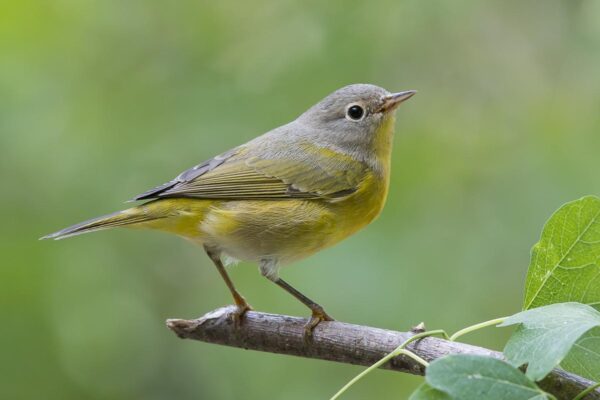The Brown-headed Cowbird is aptly named. The male is, well, a brown-headed cowbird. They have a glossy black body, an entirely brown head, and are frequently seen around cow herds. The beak of this species is short and sharp with a conical shape much like a House Finch. The females of the species are a muted grey-brown with streaking on their chest. Their song is very distinct; I have always thought it sounds like a robotic water drop. Short droplet plinks followed by an upward high-pitched whistle. The calls are similarly distinct and made up of high-pitched whistles or short chatters. Brown-headed Cowbirds are frequently observed in open fields and at forest edges. If you hear the bird before you see it, scan the top-most branches of nearby trees. They seem to have an affinity for the tops of the tallest perches in an area.
Because the Brown-headed Cowbird is easily identifiable and at the same time broadly disliked, I think they are quickly dismissed in the field without being observed for very long. Next breeding season, I implore you to sit and watch these birds if you hear a male singing. They perform a mating display where they puff out their body feathers, spread their wings, and dip forward from the branch they are perched on. Sometimes the displaying male will nearly flip completely upside down in his efforts to woo a lady. I think these birds are fun to watch, and I have developed an appreciation for them despite their bad rap.
The Brown-headed Cowbird is widely disliked by those in the bird world. The reason for their infamy is their reproductive strategy. These birds are brood parasites meaning they do not build their own nests or care for their own young, instead they lay eggs in a host bird’s nest, and the host bird will then raise the cowbird’s chick. Most often, the host brood has reduced success due to their unwelcome guest. Female cowbirds will observe the host parents while they are making their nests. Later, when the host female is laying her eggs the Brown-headed Cowbird will sneak in and lay one of her own. The female cowbird can lay up to 40 eggs per season, and they’ve been recorded to parasitize over 220 host species.
Historically, the Brown-headed Cowbird would follow the bison of North America during their migration. This ultimately meant they were not in one location long enough to care for their own clutch. With the roaming bison herds gone and more suitable habitat available across the human-altered landscape due to deforestation and heavy cattle grazing, the Brown-headed Cowbird’s home range now extends through all 48 contiguous states and up into southern Canada.
By Alexis Commiskey
Photo credit: Mia McPherson, OnTheWingPhotography




